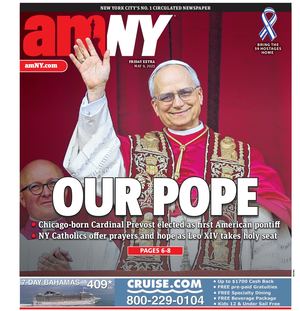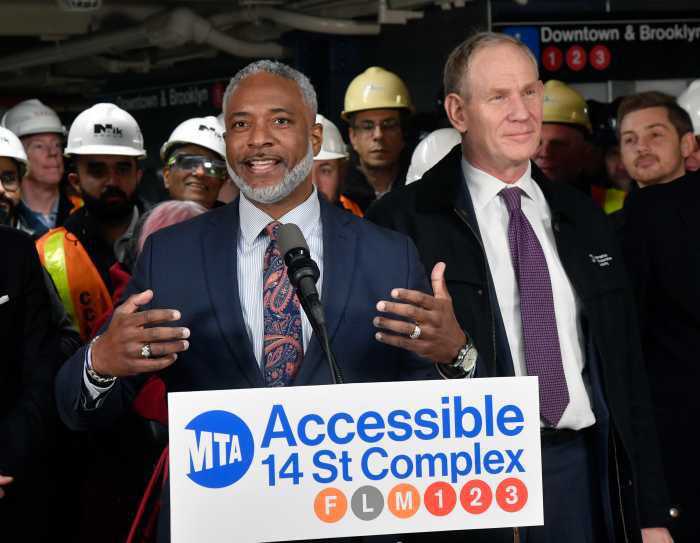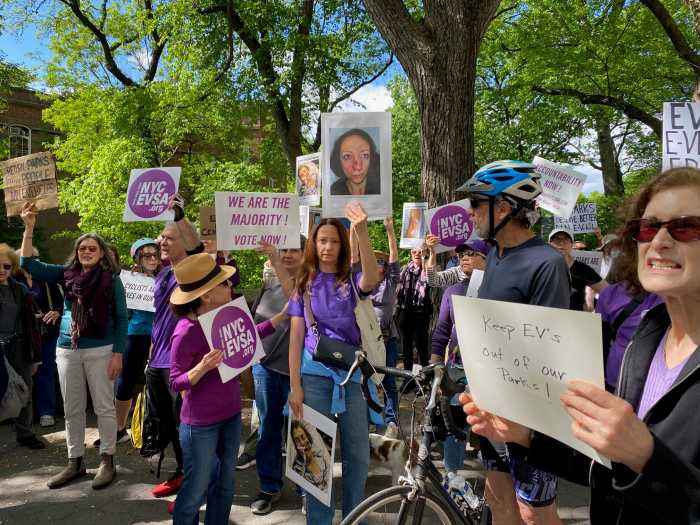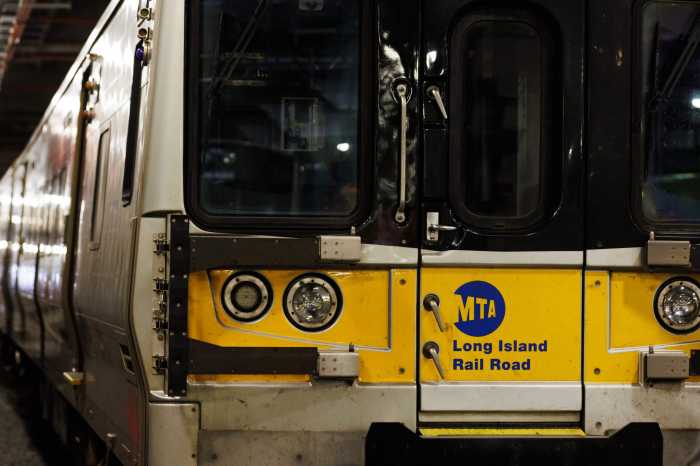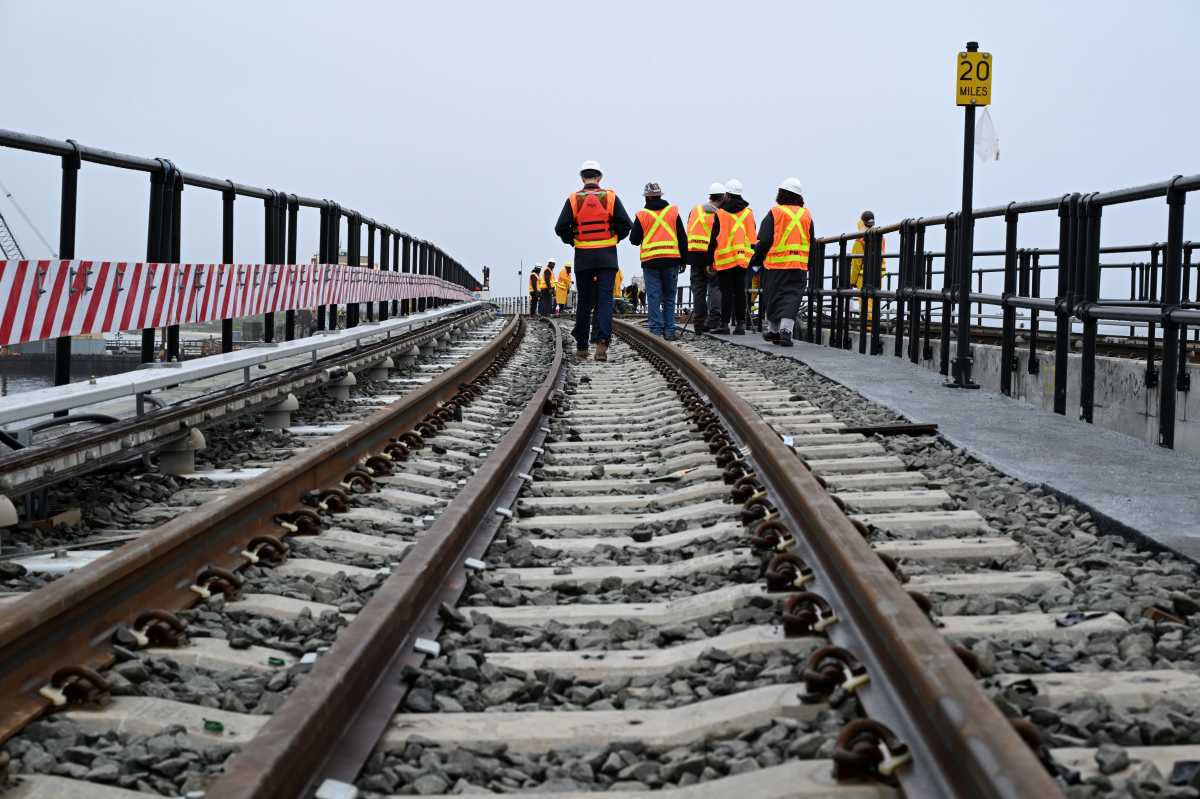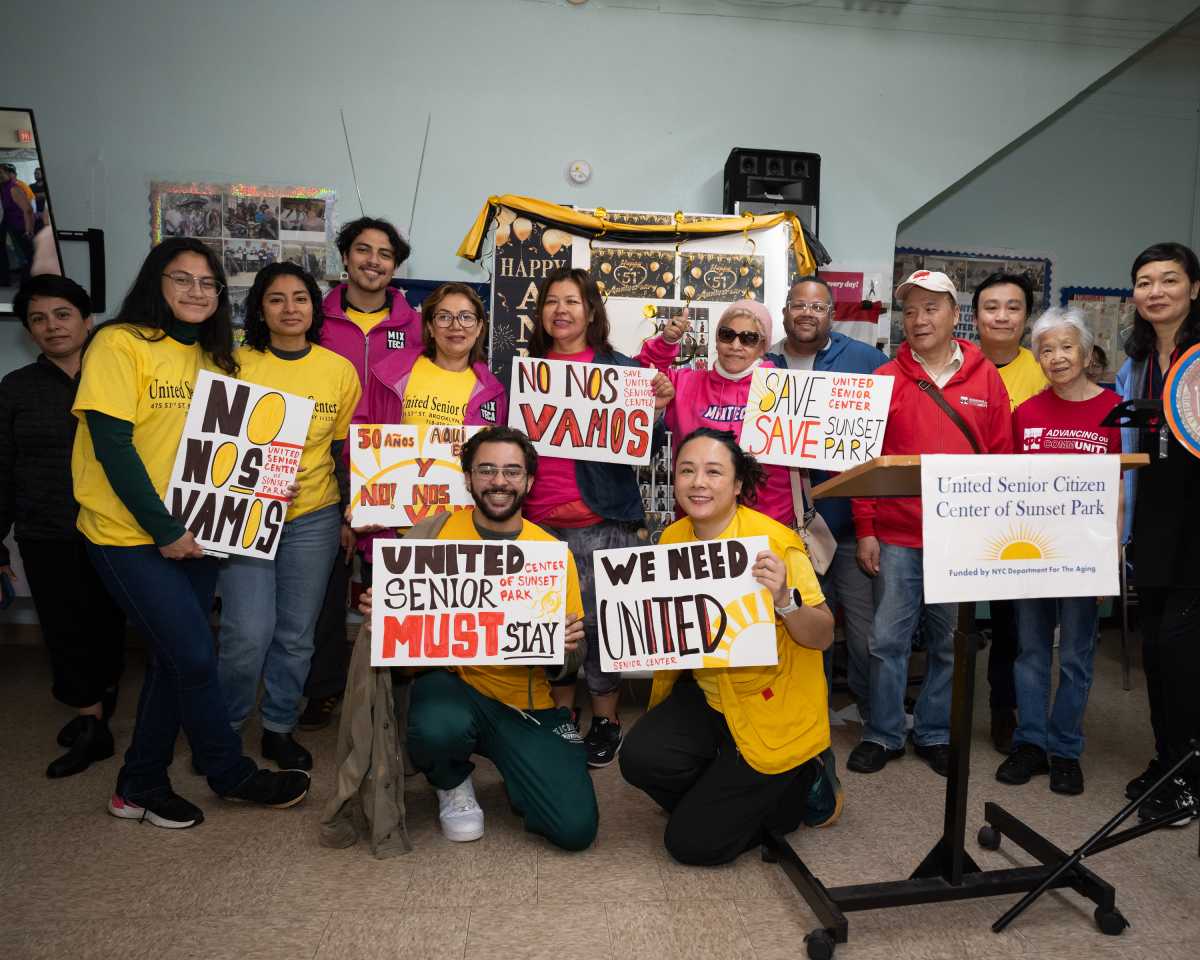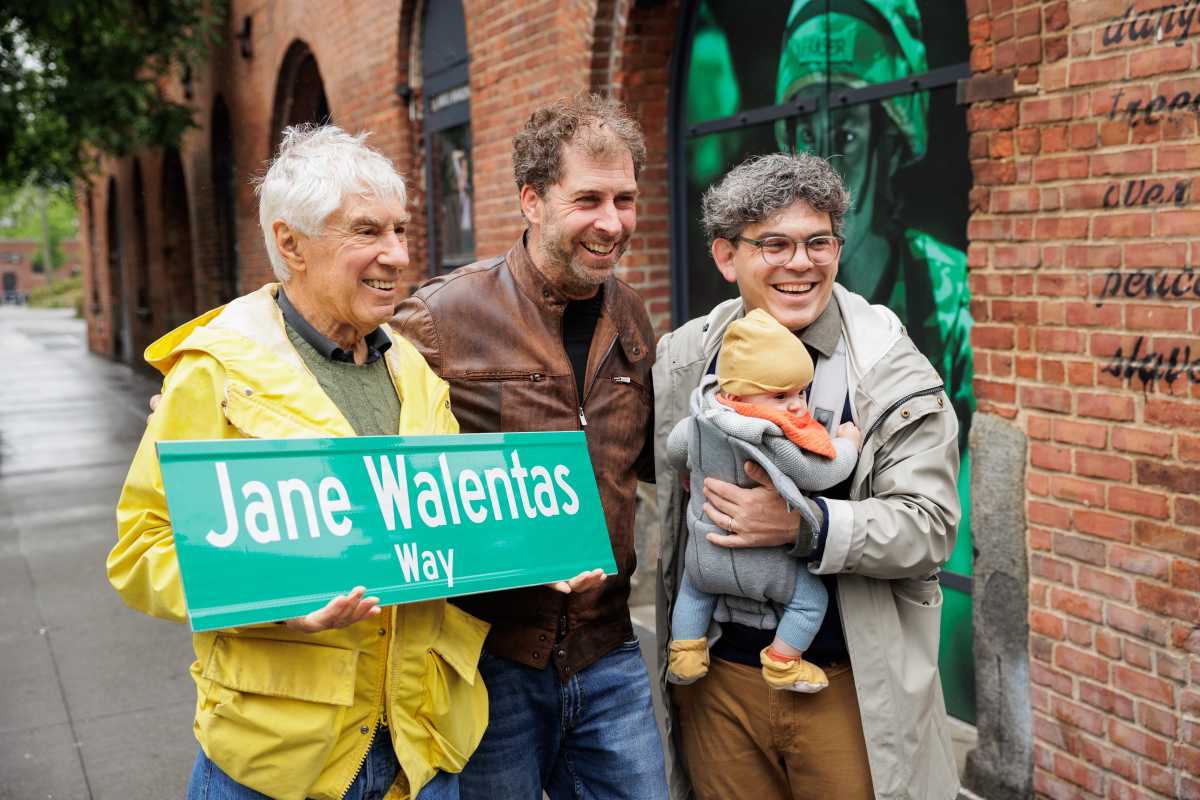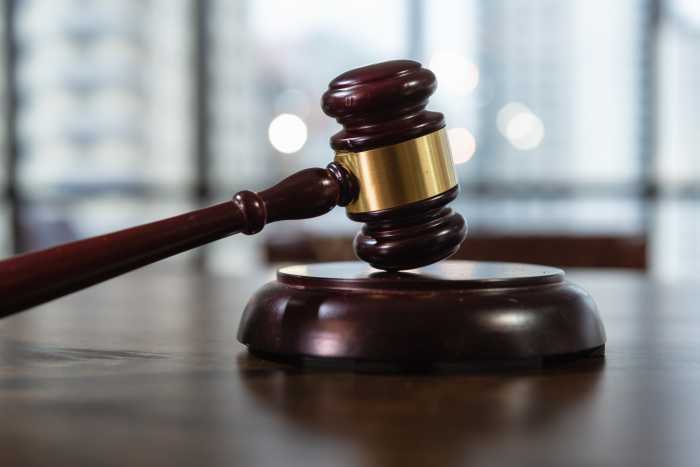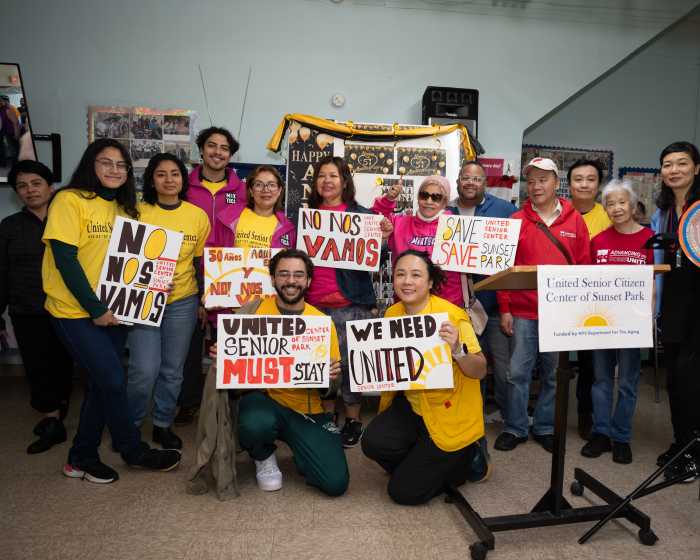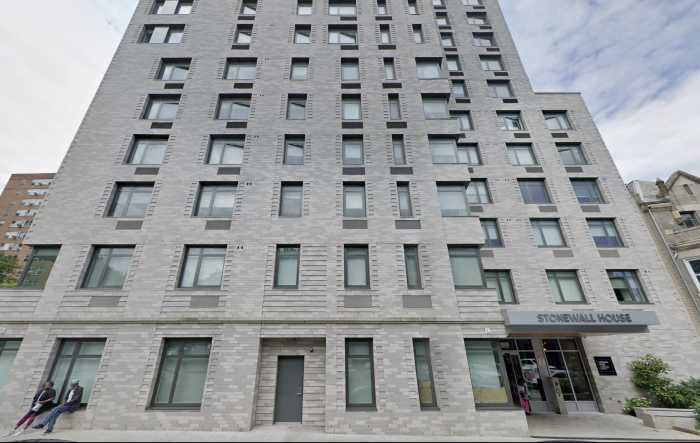
About 200 commuters gathered at a Williamsburg public hearing on Thursday to process the grim reality of L train closure options: The repairs need to happen. And that work will be extremely disruptive.
Currently, the Metropolitan Transportation Authority is considering two shutdown options to deal with the extensive damage from when Superstorm Sandy flooded the L Train’s Canarsie tubes in 2012, which were hit hardest during the storm.
“We’re here today for two reasons. We need to make sure people understand why we have to do the work,” MTA Chairman Tom Prendergast told the press before Thursday’s hearing at the Marcy Avenue Armory. “Second, we have to have a dialogue and listen to people about what their concerns are.”
One option on the table would bring a complete shutdown of service between the Eighth Avenue and Bedford Avenue stations that would last 18 months. The other proposal would close one of the two L train tunnels at a time, offering limited service — cut by 80% — between Brooklyn and Manhattan over the course of repairs that would take three years. Trains would run every 15 to 20 minutes, serving one fifth of the usual riders.
Commuters in attendance were concerned but remained calm throughout the meeting. They watched a video presentation from the MTA that outlined damages and examined a display of damaged infrastructure — track plates, communication cables and more — that the MTA used to illustrate the extent of damage.
“This is going to impact so many people, but it needs to be fixed. It’s inevitable,” said Edgar Ortiz, a 32-year-old Bushwick resident who takes the L train to his job in property management each weekday, from the Jefferson Avenue stop to Third Avenue in Manhattan.
Ortiz said that trip usually takes him about 20 minutes. Under either shutdown option, he anticipates adding another hour to his commute. He favored completely shutting down service for 18 months.
“I prefer just shutting it down completely and getting the work done as quickly as possible,” he said. “If we keep one tube open at a time, what happens if there is an issue and a train is stopped in the tunnel? What would those delays be like?”
Alma Savoia, a 64-year-old homeowner and retired teacher from Williamsburg, said she favored keeping one tube open at a time.
“It’s going to be absolutely devastating for the community — the businesses, commuters and school children,” said Savoia, who added that she has lived in the neighborhood for more than 30 years and rides the train three or four times a week.
MTA officials are eyeing potential service supplements like increased Select Bus Service heading across town in Manhattan; shuttle service over the Williamsburg Bridge; and increased service along the neighboring G, J and M lines to handle additional capacity. During construction, the MTA will take the opportunity to install wider staircases and elevators at the First Avenue and Bedford stations.
On a given weekday, the L train carries about 400,000 commuters. If it were its own transit network, it would rank among the top 10 largest transit systems in the country, according to the MTA.
Pendergast has called the impending construction the “most impactful capital construction project we have ever had to do on the system.”
Attendees could not speak to the MTA officials directly during the hearing. MTA officials instead answered questions that were written on “comment cards” that were distributed to residents as they entered.
Whatever option is chosen, East New York resident Robyn Glenn, 51, hoped that the MTA will give street preference to the shuttle buses.
“During weekend closures of the L in the past, there were just so many people trying to get on those buses,” she said.
The hearing brought out a variety of local elected officials, including Reps. Carolyn Maloney and Nydia Velazquez; state Sen. Daniel Squadron; Council member Antonio Reynoso; City Comptroller Scott Stringer and Assembly member Maritza Davila.
All in attendance accepted the need for the work.
There was also a consensus on hoping that shutdown discussions will consider the needs of business owners and all reaches of the impacted communities.
“There’s no question that businesses will suffer unless a good plan is in place,” said Andrew Hoan, executive vice president of the Brooklyn Chamber of Commerce. “The L train is the lifeblood of the community.”
The MTA hopes to decide on an option within the next three months and anticipates construction to begin in 2019.
Commuters can find more info on the project and send comments to the MTA directly at mta.info/canarsietunnelreconstruction.
